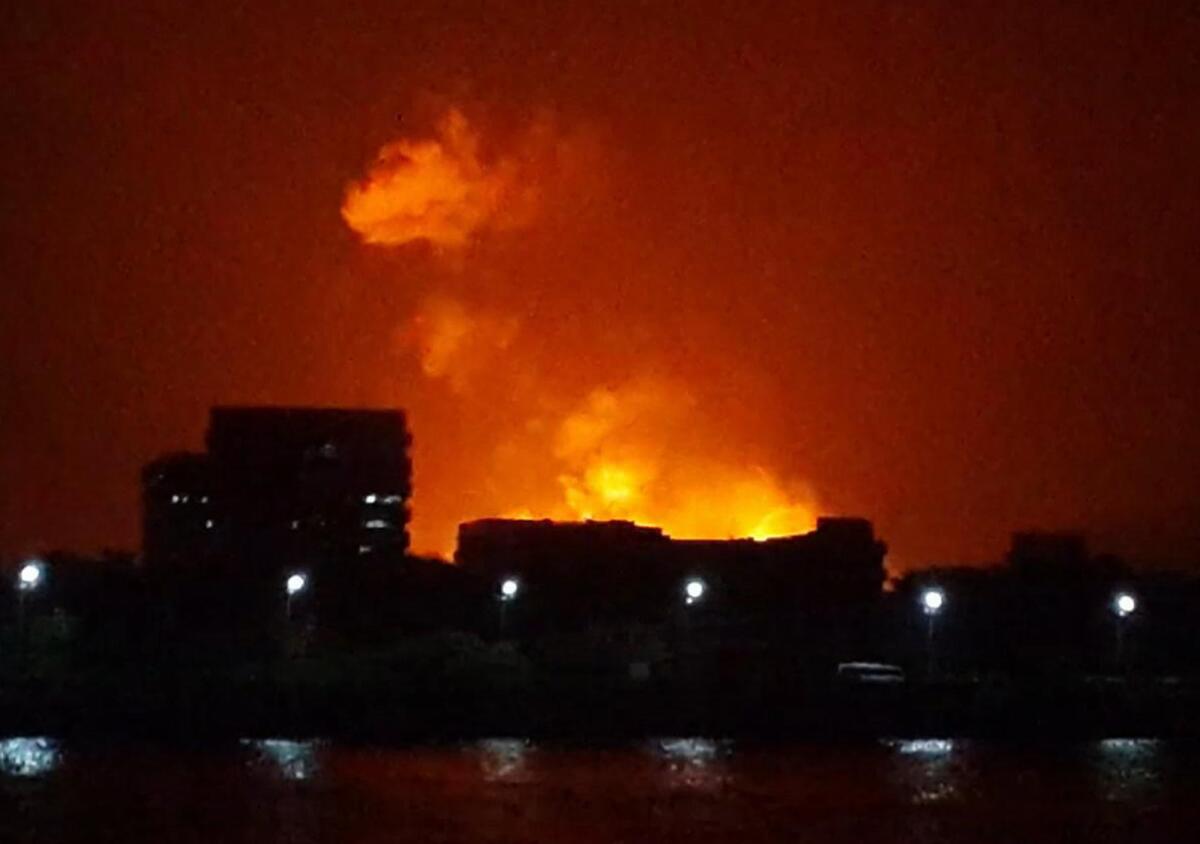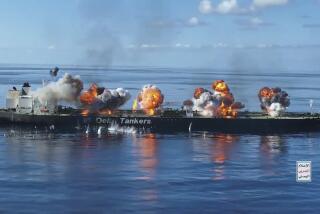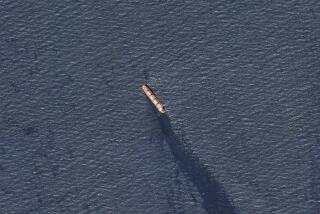Hopes fade for 18 sailors after blast on Indian sub

- Share via
NEW DELHI -- Hopes were fading late Wednesday after an explosion and fire on an Indian submarine left three officers and 15 sailors trapped inside, and navy divers failed to make contact or discern sign of life coming from inside the stranded vessel, officials said.
The explosion occurred about 12:30 a.m. local time Wednesday leaving the diesel- and electricity-powered submarine largely submerged at a dock in Mumbai where it was berthed, the navy said.
Grainy social media images showed a huge white-and-yellow explosion illuminating the midnight sky like a premature dawn, followed by a blaze that lasted several hours. The base where the accident took place is a secure area off-limits to reporters.
“We should hope for the best, but be prepared for the worst,” Adm. Devendra Kumar Joshi, chief of the naval staff, told reporters at a news conference in Mumbai. “The explosions were massive and we’ve had no contact with any of the sailors. They are missing for more than 12 hours now.”
Defense Minister A.K. Antony told reporters in New Delhi that several crew members died, without providing details. “It is the greatest tragedy of recent times,” he added.
Joshi said engineers were trying to pump water out of the stricken submarine, allowing it to float. Rescue workers managed to pry open the main hatch, fused by heat from the explosion and fire, he said, and were working on creating other openings.
Authorities have ordered an investigation into the causes of the disaster, with early media speculation focused on a gas leak or an explosion involving the vessel’s cruise missiles and torpedoes.
“It’s a very nasty one,” said Rahul Bedi, India correspondent with IHS Jane’s Defense Weekly, a military publication. “In a confined space, it’s very tricky once that happens.”
Though sabotage has not been ruled out, officials said this was almost certainly an accident. The vessel carried large amounts of ammonium, fuel and oxygen and “any combination of any of these malfunctioning” could lead to an explosion, Joshi said.
If it turns out the explosion was related to the cruise missiles, it will revive a long-standing argument in naval circles, said Raja Menon, an analyst and retired rear admiral.
“There’s been a controversy for a half-century on the wisdom of putting rocket fuel in submarines,” he said. “If it was the cruise missiles, that controversy comes up again.”
The 16-year-old Russian-built submarine Sindhurakshak, which translates as Sea Defender, had a fire in its battery systems in 2010 that killed a crew member, although navy officials said they saw no link between the two incidents.
The Sindhurakshak, which is 238 feet long, 32 feet wide and carries a full crew of 58, returned from Russia last year after an extensive $80-million overhaul.
When Wednesday’s accident occurred, 40 crew members were either on shore or managed to jump off the ship, navy officials said. Three sailors who were on deck and managed to escape with minor injuries were “in a state of complete shock and trauma and unable to speak about last night’s explosion,” Joshi said.
The vessel is one of 10 Indian Kilo-class submarines acquired from Moscow between 1986 and 2000 and equipped with Russian Club-S cruise missile systems.
The accident comes at an awkward time. On Monday, the navy launched its first domestically produced aircraft carrier with great fanfare, and two days earlier, the reactor on its first nuclear submarine was activated. Thursday is India’s independence day.
India’s military is in the process of upgrading aging Soviet-era weaponry in order to better respond to perceived threats from rivals China and neighboring Pakistan. The nation’s submarine fleet, consisting of the 10 Russian-made and four German-made vessels, has been in decline, analysts said, so the loss of even one ship will be acutely felt.
India’s conventional submarine fleet has focused largely on a perceived threat from Pakistan, Bedi said, given limits on the vessels’ range and on the time they can spend at sea. But the addition of nuclear submarines in the next few years aims to counter Beijing’s growing naval ambitions in the region, he added.
ALSO:
Israelis, Palestinians resume peace talks amid secrecy
Europe shows signs of economic recovery amid grown in Eurozone
Violence spreads across Egypt after crackdown on Morsi supporters
Twitter: @markmagnier
Tanvi Sharma in the Times’ New Delhi bureau contributed to this report.
More to Read
Sign up for Essential California
The most important California stories and recommendations in your inbox every morning.
You may occasionally receive promotional content from the Los Angeles Times.










